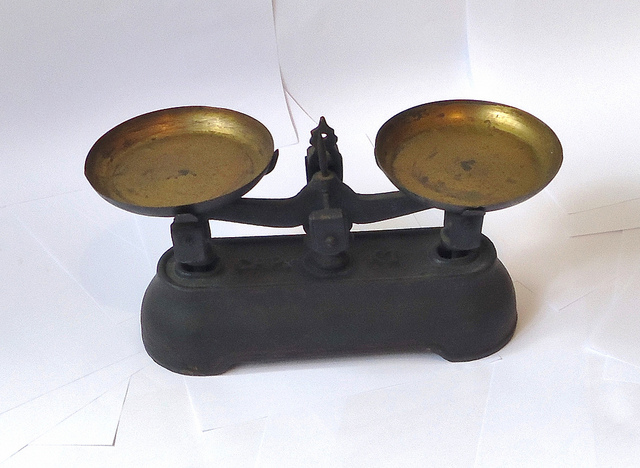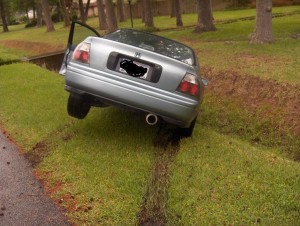 Making better decisions isn’t always easy (is that a Captain Obvious statement, or what?).
Making better decisions isn’t always easy (is that a Captain Obvious statement, or what?).
The best decision makers go to their decision making “tool kit” and try out different tools to see if one or more helps clarify which way they should go.
There was a particular tool (I’ll call it a technique) used by Amazon.com founder Jeff Bezos when he was trying to determine if he should start Amazon in the first place.
When Bezos used this technique, things became very clear about what he should do. In fact, he found it so helpful, that he has continued to use it regularly for decisions big and small.
One Problem in Everyday Decision Making
You and I make countless decisions every day. But, those decisions are only as good as the data on which those decisions are made… and the value assigned to those variables.

Often, certain variables become the center of our decision because they seem to be the “loudest.” Another way to say it is we assign them the most weight on the scale of decision.
Which variables tend to automatically be the weightiest?
- Easy over difficult
- Pleasurable over painful
- Safe over scary
For example, should I go to the gym today? What are some of the “weighty” reasons we hear in our heads? (Tip: read these reasons with a whiny voice)
- I don’t want to get sweaty (inconvenient, creates other “hassles”)
- I don’t want to take time to shower (too much extra work)
- I don’t feel very energetic (too hard to exercise like this)
- I would rather go home and “take at easy” (more pleasurable alternative)
Did you notice the nature of these reasons actually being considered? Easy is unconsciously preferred to difficult, or a hassle. It is preferable to avoid potential pain or discomfort and instead choose that which is most pleasing to me right this minute.
All things being equal, these variables almost always carry undue weight and influence in our decision making.
How Jeff Bezos Counteracted Distorting Influences
In the early 1990’s, Bezos was working as a well-paid IT person on Wall Street. He noted the rapid consumer and business growth of the newly emerging world wide web. He wondered if it made sense for him to develop a business that leveraged that new technology platform.
Bezos had a decision to make.
The technique Bezos used to help clarify whether or not to move forward is what he called the Regret Minimization technique. He understood that you shouldn’t make decisions primarily based on the immediate, short-term variables you can see.
Instead, he projected himself into the future, and imagined what the wiser version of himself would think when he was 80 years old looking back over his life and decisions, including the decision before him. What regrets would he have choosing one over the other?
In Bezos’ own words—
“If I go participate in this thing called the internet, which I believed at the time was going to be a big deal, if I try and fail, will I regret even trying? I knew the answer to that was “no”. But, I also knew that if I didn’t try, that I would always regret that.”
Minimizing Long-Term Decision Regret
Without this technique, Bezos could easily have wrestled with his decision differently. He could have given too much weight to the safety and comfort of the known, instead of the discomfort of a risky, unknown outcome. Without a more neutral perspective, the short-term considerations and fears would unduly influence his decision.
“I have a good paying job right now. If I quit this job to go start this new venture, and it fails, I fear losing my life savings… and the security I enjoy right now.”
“If I go out on a limb, and this thing doesn’t work out, I will look like a fool.”
“Bottom line: Starting this company has too much to lose, and will be very difficult to pull off. It isn’t worth it.”
Instead, Bezos wisely created distance and perspective to see the variables in a different light. For him, minimizing long-term regrets was a “weightier” value than safe and easy.
How You Can Apply This Technique
Here’s an example of how you might apply this technique in your life. Imagine your child interrupting something you are doing (or are about to do) to tell you about something that may take some time to go over.

What is your first reaction? Irritation? Don’t have time? You secretly would rather do what YOU want to do rather than listen to her drone on about her situation?
The result of taking a short-term approach is to brush off the overture by the child, or half-heartedly listen, or hurry it along so you could do what you really want to do.
Note to self: It is not always best to “follow your heart’s desire.”
But, what if you take a long-term view by applying the regret minimalization technique? If you were 80…
- Would you regret pushing the child away and not cultivating opportunities to connect and build a deeper relationship?
- Would you regret your older child not wanting to spend time with you because they concluded you don’t really care about them?
If you repeatedly yielded to the expediency of the “now” considerations, you will reap the wrong harvest. Avoiding the short-term inconvenience (too much hassle right now) never outweighs the long-term good that comes from making better decisions.
Questions To Ask When Facing A Decision
When you are facing a decision, big or small, ask yourself…
- Is my decision being overly influenced in the direction of easy and convenient over difficult or inconvenient?
- Is my decision being overly influenced by comfort, safety, or “the known” over the discomfort of uncertainty and seeming risk?
- Is my decision weighted more on short-term gain or long-term benefits?
- Looking back on my life, will I regret choosing one way or another?
“Regret for the things we did can be tempered by time; it is regret for the things we did not do [because we chose the expedient, safe, easy way] that is inconsolable.” – Sydney J. Harris
To learn about other decision making techniques you can add to your toolkit, download our free resource, Research Backed 5 Step Process to Making Better Decisions.
Leave a question or comment below on decisions you’ve made that were good or bad, and why you think they turned out that way.









Hello Pat, methinks in taking decisions one should lend themselves wholly to the consequences of those decisions, because at the end of the day the consequences, and not the decisions, are what you live with. yeah, reflecting and praying over decisions-making is sound policy.
Good point Stephen. We absolutely need to think through, not only our decisions, but the likely range of consequences (good or bad) that come with them. One challenge noted in the Affective Forecasting article (wiseinsights.net/affective-forecasting-effects) is that we are often terrible at predicting how something will turn out. That’s why we need to come up with a range of potential outcomes… and be prepared for any and all of those consequences.